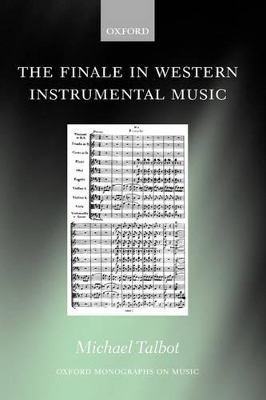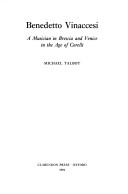Oxford Monographs on Music
2 total works
The knowledge that finales are by tradition (and perhaps also necessarily) 'different' from other movements has been around a long time, but this is the first time that the special nature of finales in instrumental music has been examined comprehensively and in detail. Three main types of finale, labelled 'relaxant', 'summative', and 'valedictory', are identified. Each type is studied closely, with a wealth of illustration and analytical commentary covering the
entire period from the Renaissance to the present day. The history of finales in five important genres — suite, sonata, string quartet, symphony, and concerto — is traced, and the parallels and divergences between these traditions are identified. Several wider issues are mentioned, including
narrativity, musical rounding, inter-movement relationships, and the nature of codas. The book ends with a look at the finales of all Shostakovich's string quartets, in which examples of most of the types may be found.
entire period from the Renaissance to the present day. The history of finales in five important genres — suite, sonata, string quartet, symphony, and concerto — is traced, and the parallels and divergences between these traditions are identified. Several wider issues are mentioned, including
narrativity, musical rounding, inter-movement relationships, and the nature of codas. The book ends with a look at the finales of all Shostakovich's string quartets, in which examples of most of the types may be found.
This is the first study of the life and works of Benedetto Vinaccesi (1666-1719), who, despite his present-day obscurity, was a gifted and, in his day, much-admired Italian composer from the period of Corelli. His significant corpus of works includes operas, oratorios, sonatas, cantatas, and church music of many kinds, and Talbot's description brings to light their striking originality. More importantly, perhaps, since Vinaccesi's music harks back to an earlier generation of Italian composers (Legrenzi, Stradella, Colonna) yet also anticipates the later developments of Albinoni and Vivaldi, it constitutes an unusual amalgam of elements identified today as "middle" and "late" baroque, and Talbot's survey is able to place in focus many neglected aspects of stylistic evolution in the years around 1700. His chronicle of the Vinaccesi family and description of the "citizen" class to which it belonged is invaluable for the light it sheds on the place of the composer in seventeenth-century Italy. He also provides a wealth of other information on the society, institutions, and local history of Italy (especially Brescia and Venice) in the seventeenth and eighteenth centuries. The result is a rounded portrait of an important musician, which also serves to illuminate many aspects of the Italian baroque.

